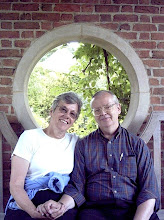We can also relate to the sacred through the rediscovery of pilgrimage. Pilgrimage is a basic human need to connect our lives to places of power. There are places with power because of the way they are: mountain tops, for example, are often places of revelation partly because there is a sense of being up above everything and looking down on it, and partly because they are where the earth reaches up to the heavens. Then there are places which are sacred because of what happened there: where someone has had a vision, some great historical event has taken place, some act of healing, or maybe where some great man or woman has been born or died. The great churches, cathedrals, and temples, and almost certainly places like Stonehenge and Avebury, are located at special places. Such places are like great outdoor temples through which you relate the community to the life of the heavens.
When pilgrimage was suppressed by the Protestant Reformation in the sixteenth century, this natural way of moving in relation to sacred place was cut off and tourism was invented to replace it. So tourism is a kind of secularized pilgrimage! You still go to the ancient sacred places — the cathedrals, the pyramids, the great henges, the Holy Land — but you no longer go explicitly because you want to connect with the spirit and power of the place. You go there to observe it in some kind of detached way and to take photographs of it to show your friends.
When tourists enter a sacred place of worship they are slightly embarrassed because they can't really take part otherwise they would not be tourists, they would be pilgrims. When you visit a place as a pilgrim you go with the intention of connecting with the place and you go with some kind of offering. You go there to pray and to seek some vision or blessing. You take back something of the power of the place to share with those around you at home. Most tourists would actually prefer to be pilgrims — they would enjoy it much more!
— Rupert Sheldrake, "Discovering the Sacred," in The Way Ahead: 50 Visions, Eddie and Debbie Shapiro (eds.), pp. 196-197.
Every day people are straying away from church and going back to God.
— Lenny Bruce, in The Little Zen Companion, David Schiller (ed.), p. 20.
Ring the bells that still can ring. Forget your perfect offering. There is a crack in everything. That's how the light gets in.
— Leonard Cohen, in Ibid., p. 26.
Sometimes I go about in pity for myself,
and all the while
A great wind is bearing me across the sky.
— Ojibwa Saying, in Ibid., p. 43.
In walking, just walk. In sitting, just sit. Above all, don't wobble.
— Yun-men, in Ibid., p. 71.
Do not seek to follow in the footsteps of the men of old; seek what they sought.
— Basho, in Ibid., p. 107.
God made everything out of nothing. But the nothingness shows through.
— Paul Valéry, in Ibid., p. 177.
The notes I handle no better than many pianists. But the pauses between the notes — ah, that is where the art resides!
— Arthur Schnabel, in Ibid., p. 179.
Even if our efforts of attention seem for years to be producing no result, one day a light that is in exact proportion to them will flood the soul.
— Simone Weil, in Ibid., p. 192.
When a fish swims, it swims on and on, and there is no end to the water. When a bird flies, it flies on and on, and there is no end to the sky. There was never a fish that swam out of the water, or a bird that flew out of the sky. When they need a little water or sky, they use just a little; when they need a lot, they use a lot. Thus they use all of it at every moment, and in every place they have perfect freedom.
— Dogen, in Ibid., p. 216.
Zen is not some kind of excitement, but concentration on our usual everyday routine.
— Shunryu Suzuki, in Ibid., p. 301.
We are here and it is now. Further than that, all human knowledge is moonshine.
— H.L. Mencken, in Ibid., p. 324.
Subscribe to:
Post Comments (Atom)

No comments:
Post a Comment